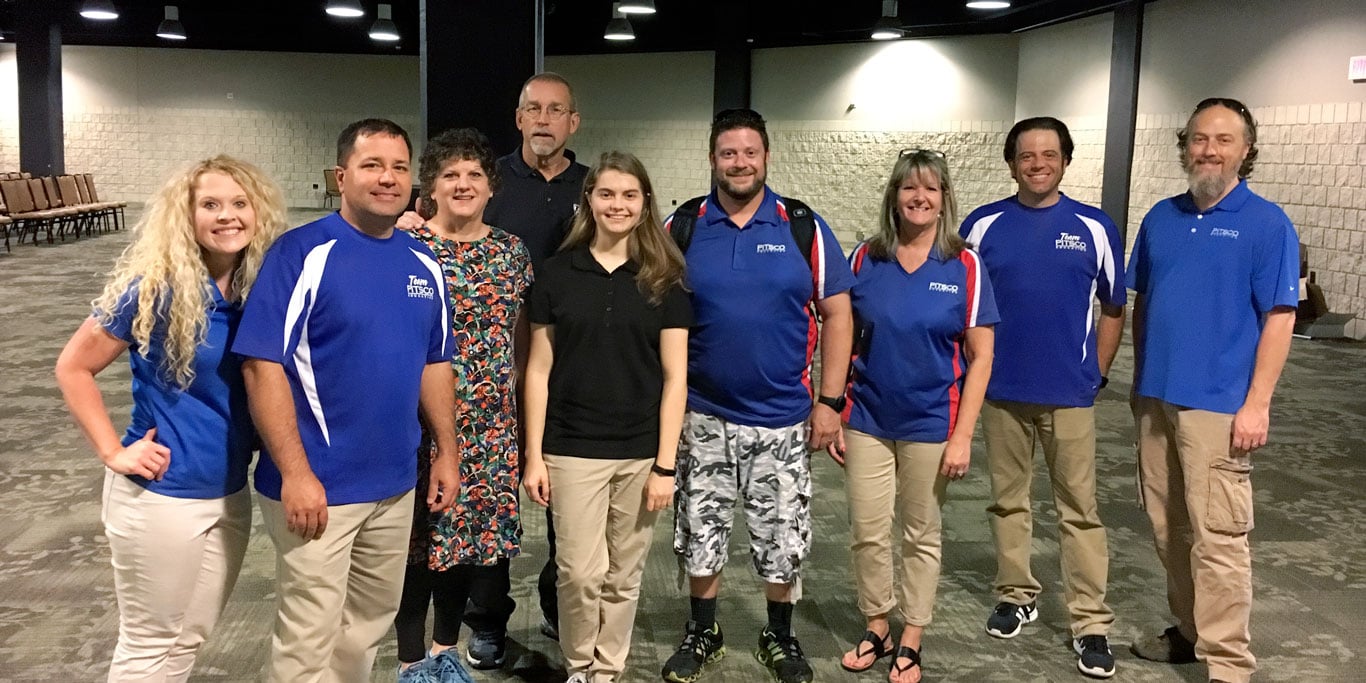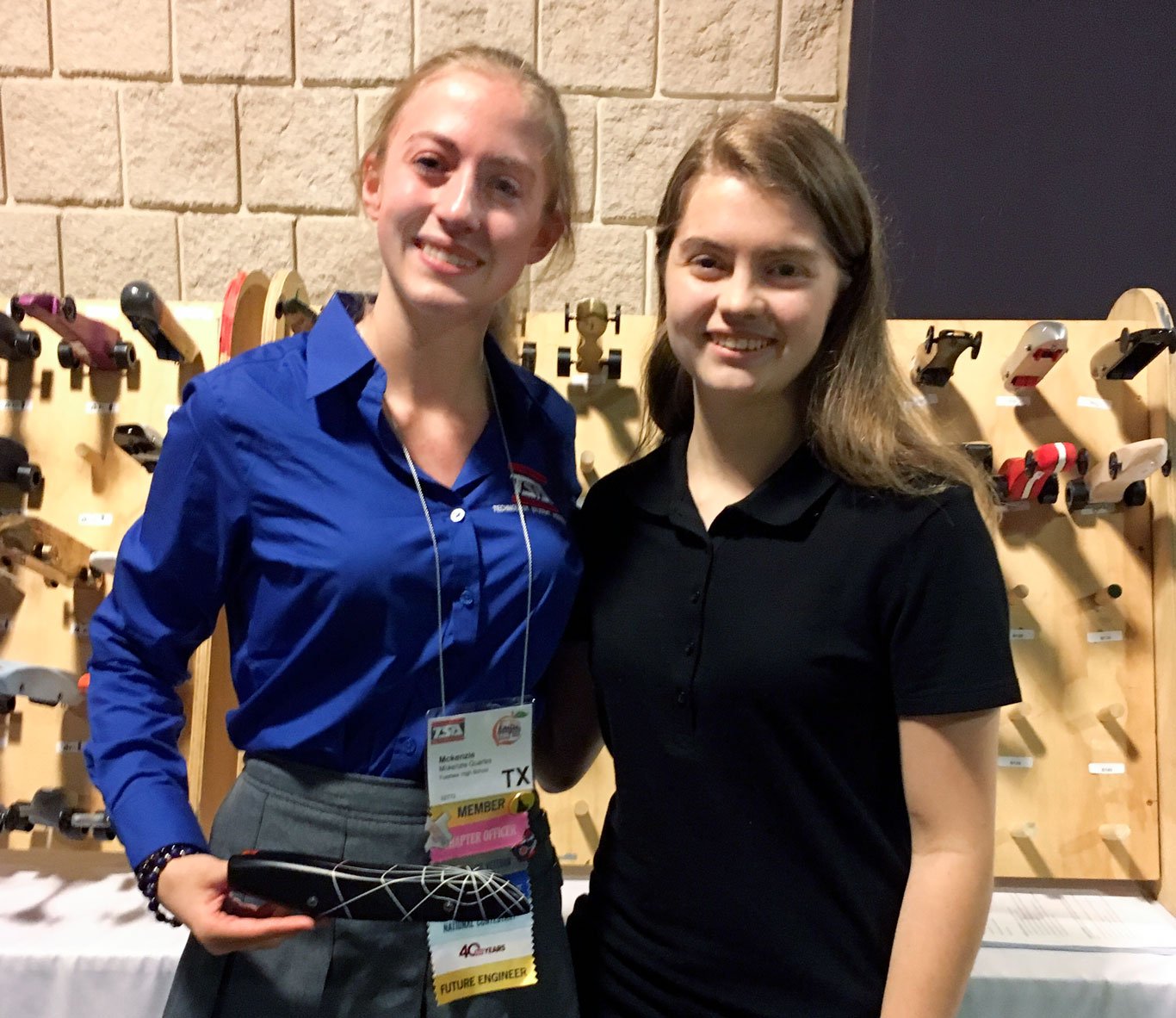Updated 6/17/24
Think back to middle and high school. Were you a part of a club or two? Or maybe you were involved in basically everything that was offered? Have you ever reflected back to the time you spent in those organizations and the impact that experience had on your education and future? Maybe it was insignificant or incidental. But, maybe, the experience was pivotal to the person you became or to a career interest decision you made.
Today’s employers are clamoring for employability skills and 21st-century skills such as communication, collaboration, problem-solving, initiative, enterprise, time and self-management, and empathy, among others. But how do students acquire these work and life skills? We wholeheartedly believe hands-on education can help foster those skills. We also enthusiastically believe Career and Technical Student Organizations (CTSOs) play an important role too. The opportunities they afford students and their place in the educational extracurricular ecosystem can’t be overlooked.
Full disclosure: I have a personal soft spot for CTSOs. I’m a product of one. The capacities I developed in Family, Career, and Community Leaders of America (FCCLA) in my rural high school are deeply rooted in my being. I can say with certainty I wouldn’t be the person I am today without my time in the organization’s infamous red jacket. I’ve frequently drawn from the lessons I learned and the relationships I built within FCCLA in both my personal and professional life.
The Technology Student Association (TSA)
TSA is the preeminent intersection of hands-on STEM education and CTSO. TSA has been around for four decades – it was formerly the American Industrial Arts Association (AIASA) – and comprises more than 250,000 middle school and high school students engaged in STEM education and activities. The organization is guided by their mission:
TSA activities correlated to the ITEEA Standards for Technological Literacy can be offered in the classroom and through local chapters as well as state and national competitions. Pitsco Education is proud to support the Dragster Design and the Junior Solar Sprint competitions, among others.

CO2 Dragsters Make History
The inaugural CO2 dragster competition was held in 1979 in Memphis, TN, with only EIGHT competitors. Since then, the technology, the cars, and the equipment have changed, and the competition has grown to approximately 200 racers each year. But the spirit of the event has remained the same – inspiring hands-on STEM learning, fostering creativity, developing technical skills, and having fun.
Over the years, we’ve seen cars of all designs and students from all over the country make their way to the winner’s circle. One of our favorite parts each year is connecting with the advisors and student competitors.

For the several years, the event has seen some serious girl power. Merritt Kendzior of Southeast High School in Bradenton, FL, made history in 2017 with her fourth consecutive gold win. Heidi Raley of Manatee Schools in Palmetto, FL, and McKenzie Quarles of Fulshear High School in Lamar Consolidated ISD, TX, kept the trend going by securing the top spots in both the middle and high school levels, respectively, in the 2018 Dragster Design competition. Also, another fun continuation, Heidi’s big brother, Hunter, was the 2017 middle school champ. We love a good family tradition!
Advice from a Dragster Champ
We had the chance to connect with Kenzie after her win back then. She shared she’s always loved a good challenge, so in eighth grade, at the beginning of her time in TSA, she entered the middle school Dragster Design event. She enjoyed the research and the competition. After her first event, although happy with how she competed, she “was not satisfied and kept trying every year.”
In 2018, her car, Black Widow, survived multiple heats and sped to the top spot. Looks like persistence and hard work has paid off, Kenzie!

Her favorite part about CO2 Dragster Design event:
“How it requires you to constantly improve your knowledge and skillfulness in the art of making a car . . . and how it has led me to meet many new people who have helped me along the way.”
About her championship dragster:
“Since the beginning [of my TSA time], I’ve always used a bandsaw to create my cars. A CNC wasn’t available to me. So, in order to be competitive against CNC-made cars, I knew I had to make my car better in every other way. . . . I did a lot of research on the internal physics, etc., which greatly impacted my results. Alongside the inner workings, I knew I needed a good design. I experimented on the best design based on my available resources and created Black Widow VI.”
What the Dragster Design competition taught her:
“Dragster Design has taught me to not be afraid to push the limits or take risks. Just like in life, the only way you can do well in CO2 Dragster Design is if you take the risk, pushing yourself and your design to the limits. If you pull back in fear of being DQ’ed, you’ll never make it in the race; just like if you keep it safe in life because of the fear of failure, you will never succeed. TSA has also taught me the importance of learning to work with others – which has helped me greatly in academics and in life.”
Her best advice for someone building their first dragster or entering his or her first competition:
“Do your research. Don’t be afraid to contact experienced dragster competitors for tips and tricks you can use on your car. Though we are all competing with each other, most dragster competitors do not mind helping you get settled in the event. . . .
My personal tip is to really take a look into aerodynamics and make sure you’re getting your car weight as light as possible. . . .
What I’ve seen with beginners is that they sacrifice one of the two in order to completely satisfy the other. For example, I’ve seen many aerodynamic designs who do not succeed due to their heavy weight and vice versa. Another big tip is to NEVER do something to your car to make it appear nice if it will hurt it in the race. Just because it might look good doesn’t mean it will run well. Always do what’s best for the race, and the rest follows suit.”
Join the Competition
There are three important aspects of dragster competitions: the dragster, the track, and the launcher. Make sure to check the rules if you and your students join an established competition, but let us give you some tips about the essentials.

Dragsters: The Heart of the Competition
What’s a dragster competition without a dragster? It’s as important as the football is to a football game. But to compete in a race, the players, or rather students, have to build their vehicle. There are many blanks available, and you can choose from various shapes and types of wood or use Styrofoam for prototyping. Here are a few options:
- Popular balsa wood bodies are triangular and leave plenty of room to create unique, streamlined designs. Balsa wood is great for young students because it’s soft and easy to cut, but for the same reason, it can be challenging to use for those with poor motor skills. We don’t recommend for a first attempt at building a dragster, if a lot of cutting is planned.
- The rectangular balsa Custom Cruiser Kit Blank has a plethora of design options and could even be carved into a truck, van, or other unique racer for the Transportation Modeling event at TSA or other CO2 competitions.
- The Fusion Body Blank is a high-density foam that can be formed and finished much easier than wood. The mass of this blank is approximately equivalent to the balsa wood blanks, and it’s officially approved by TSA for use in CO2 dragster competitions.
- The CO2 Dragsters packs come in balsa, basswood, and Fusion variations, in both single and 50-packs. Each option comes with everything you need to make a basic dragster, including the blank, axles, wheels, and CO2 cartridge. Bonus: These teach the metric system!
Pick Your Track
What does everyone use for a track? Some use the floor for a racing surface, but it can sometimes be unpredictable with unevenness or unseen bumps. CO2 cars can travel close to 70 mph, so you might want to consider a more controlled situation, such as using a manufactured track for reliability and consistency.
- The EZ Track Raceway allows for a quick setup and easy storage, and it’s compatible with many launchers. It includes 20 one-meter high-strength PVC sections that easily slide together. This system is only slightly elevated off the ground and can be one or two lanes.
- The FasTrak Elevated Racetrack is made of strong and durable aluminum and simulates to scale a quarter-mile racetrack. The height improves viewing for spectators. Note that this is the track used for TSA’s national dragster competition.

These tracks can be used for more than only CO2 racing, as they can be shared with classes building mousetrap vehicles, bottle racers, solar cars, and more.
Start Your Cartridge!
Without a launching mechanism, the vehicles won’t get very far down the track, at least not CO2 dragsters! Let’s say your students have designed dragsters using one of our dragster kits and inserted a CO2 cartridge in the back end. The launching mechanism is what pokes a hole in the cartridge to propel the dragster forward at an incredible rate of speed. The design determines just how fast the vehicle moves.
Used for more than just launching, the Impulse G3 Race System launches and automatically times the dragsters as they cross the finish line. Auto mode launches the cars simultaneously with a single button, or manual mode launches them using two thumb triggers. The reaction time adds another element to the race and is accurately displayed to the nearest 0.001 second. Students love this part of the race!!
By the way, if you’re going for a non-CO2 competition, take a look at the EZ Start Raceway. It’s easier on the budget and uses a monofilament line to keep air-powered vehicles on the track.
Crossing the Finish Line
Whatever you choose to use for your dragsters, track, and launcher, this type of fun hands-on, minds-on activity allows students to learn through failure, persistence, completing research, and working in teams while also learning STEM concepts such as mass, acceleration, friction, drag, and engineering design. That all sounds like employability skills to us!
The beauty of dragster competitions is that you can start one right in your classroom or you can race to the finish through a national organization such as TSA. At the end of the day, it’s about developing 21st-century learners through their successes and failures. The thrill in students’ eyes when they see how fast their dragster has flown down the track is an extra bonus.
Comment and share your dragster experiences – successes and failures – to help others getting started with competitions, or you can post questions to get feedback for assistance is getting started.
TOPICS: Middle School, High School, BEYOND THE CLASSROOM, Competitions, Collaborations, STEM, TSA, Dragsters, Future Ready, 21st Century Skills, Maker Ed, Hands-on Learning




